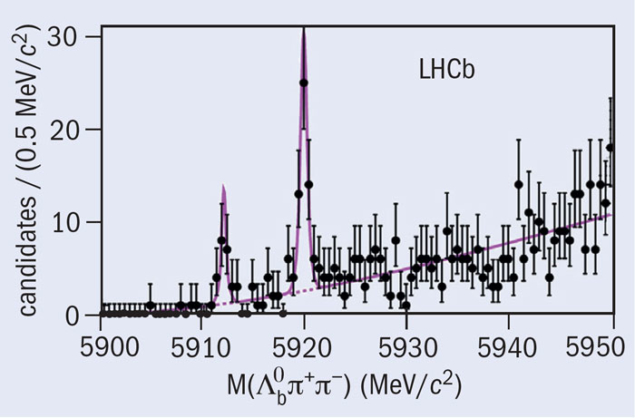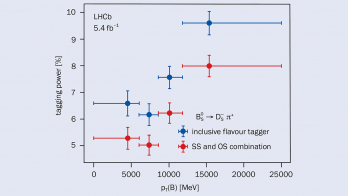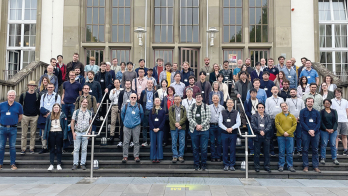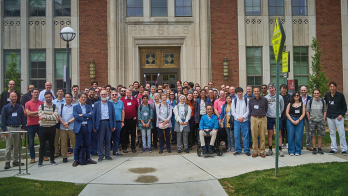The flavour-changing neutral-current decays B → K(K*)μ+μ– provide important channels in searching for new physics, as they are highly suppressed in the Standard Model. The predictions in these channels suffer from relatively large theoretical uncertainties but these can be overcome by measuring asymmetries in which the uncertainties cancel. One example is the isospin asymmetry AI, which compares the decays: B0 → K0(K*0)μ+μ– and B+ → K+(K*+)μ+μ–. In the Standard Model, AI is predicted to be small, around –1%, for the decays to the excited K*, and while there is no precise prediction for the decays to the K, a similar value is expected.

LHCb has measured AI for these decays as a function of the dimuon mass (q2), using data corresponding to an integrated luminosity of 1.0 fb–1, with a surprising result. While the measurements for B → K*μ+μ– are consistent with the prediction of negligible isospin asymmetry, the value for B → Kμ+μ– is non zero. In particular, in the two q2 bins below 4.3 GeV/c2 and in the highest bin above 16 GeV/c2 the isospin asymmetry is negative in the B → Kμ+μ– channel. These q2 regions are furthest from the charmonium regions and cleanly predicted theoretically. The measured asymmetry is dominated by the deficit observed in B0 → K0μ+μ–. Integrated over the dimuon mass range, the result for AI deviates from zero by more than 4σ.
These results were obtained with the full data sample for 2011, which should more than double by the end of 2012. In the meantime, theorists will analyse this puzzling result to establish whether this effect can be accommodated in the framework of the Standard Model – or whether its explanation requires new physics.
In a different study, LHCb observed two Λb excited states for the first time, as predicted within the context of the quark model. The excited states (see figure) were reconstructed in three steps. First, Λc+ particles were reconstructed through their decay Λc+ → pK–π+; then the Λc particles were combined with π– to look for Λb particles; finally the Λb particles were combined with π+π– pairs. In this way the team found about 16 Λb(5912)→Λbπ+π– decays (4.9σ significance) and about 50 Λb(5920)→Λbπ+π– decays (10.1σ) among some 6 × 1013 proton–proton collisions detected during 2011.
Further reading
LHCb collaboration 2012 arXiv:1205.3422 [hep-ex]
LHCb collaboration 2012 arXiv:1205.3452 [hep-ex]








